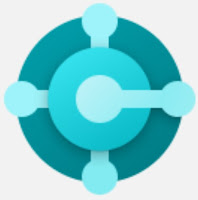 Hi Readers,
Hi Readers,Thanks for the great response to this series.
In this article, we will do data migration from Business Central 14 to Business Central 2019 Wave 2(15).
During Upgrade we will use Custom Microsoft Base Application Extension that we developed in the Last Article.
This is part 2 of the upgrade which only contains steps that need to be executed in Business Central 15.
For other Articles in this series Refer Here.
#MSDYN365BC #BC2019Wave2
** Again as I said earlier, This approach is just for Demo. I am not suggesting to use this approach, I am just using this for this demo.
So lets start the Part 2 of upgrade process.
To start with replace parameters in the query. Search for words after Replace and use Replace All Functionality to replace with actual values.
Run Following Queries after you updated values.
** We load these modules for loading Business Central PowerShell commands.
2. Do a Technical conversion of Database.
This step Technical upgrade Business Central 14 database to Business Central 15 Executables.
As there is no Development Environment in BC15, now this steps is run from PowerShell.
3. Check and Start Service if not Running.
This step check for service is running. If not then this step Run Service.
4. Set Parameter of Service Tier.
In this steps we set following parameters -
- Database Server Name.
- Database Server Instance Name.
- Database Name.
- Disable Task Scheduler.
- Load Developer License in database.
5. Restart Service.
In this step we restart service to apply all these values.
Here are Results from first set of command Execution.
Next Set of Steps is to Publish, Sync and Install all Base Extension that are required for upgrade.
6. Publish System App Symbol.
In this step we will publish the System Symbol file which is stored in Installed Folder.
7. Publishing System Application.
In this step we will publish the System Application which is part of the product DVD.
8. Publishing Base Application.
In this step we will publish the Base Application which is part of the product DVD (in case of non customized BC14 Database).
As for this demo, we created a custom Base App so we will select our custom Base App Filepath and Name.
9. Sync Tenant.
In this step we will sync changes using Sync-Navtenant PowerShell cmdlet.
10. Sync System Application.
In this step we will sync the System Application against our database.
11. Sync Base Application.
In this step we will sync the Custom Base Application against our database.
12. Install System Application.
In this step we will Install the System Application in our database / tenant.
13. Install Base Application.
In this step we will Install the Custom Base Application in our database / tenant.
Next, We will run the data upgrade to Business Central 15.
15. Run Data Upgrade.
In this step Data will be upgraded from BC14 to BC15 from CAL Tables to AL Extension Table.
16. Upgrade Extension.
In this step we need to upgrade custom extension if required.
It means Four Steps per app -
- Publish New Version App,
- Sync new Version App,
- Data Upgrade of App &
- Uninstall Old Version of App.
17. Install New Extension.
In this step we need to install new extension if required.
It means Three Steps per app -
- Publish App,
- Sync App &
- Install App.
18. Set Parameters in Service after Upgrade.
In this step we will setup -
- Set DestinationAppforMigration in Service Tier.
- Enable Task Scheduler in Service Tier.
- Change License in database to customer License.
- Restart Service Tier.
Check Data in Business Central 15 after Upgrade.
If you remember we setup data in multiple tables. Just check one table records to see that data bring forward or not.
Let's check data in Item Charges Table.
So we have finally successfully upgraded data to Business Central 15 with a custom Base App.
You can download Part 1 of Upgrade Query from GitHub.
File Name - 2. Upgrade BC14 To BC15 - Part 2 [Execute in Business Central 15].ps1
Stay tuned for more, about why this is not a best idea to upgrade this way.
Hope you find it useful. Let me know your views as a comment on this article.
Regards,
Saurav Dhyani
www.sauravdhyani.com









Comments
Post a Comment